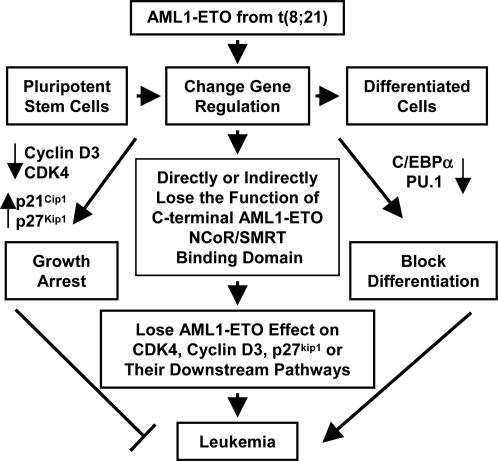Fig. 5.
Model of secondary mutational event(s) in t(8;21) leukemogenesis. After the acquisition of the t(8;21) chromosomal abnormality, AML1-ETO suppresses both cell proliferation and differentiation by means of the change of the expression of cell-cycle and differentiation regulators. Such dichotomous effect is not sufficient for leukemogenesis. Additional mutations are required to promote leukemia. These mutations could directly or indirectly affect molecular events associated with the function of AML1-ETO C-terminal NCoR/SMRT interacting domain, including the change of the expression of cell-cycle regulators, such as CDK4, cyclin D3, and p27kip1, to release the negative effect of full-length AML1-ETO to cell cycle and promote leukemia development. Such mutations may result in the expression of AML1-ETO without its C-terminal portion (such as alternative RNA splicing or DNA point mutation), disruption of the interaction of AML1-ETO C-terminal region with its binding partners (such as NCoR and SMRT), dysregulated expression of AML1-ETO target-gene expression (such as p21), or changes of signaling pathways further downstream from the primary AML1-ETO targets.

